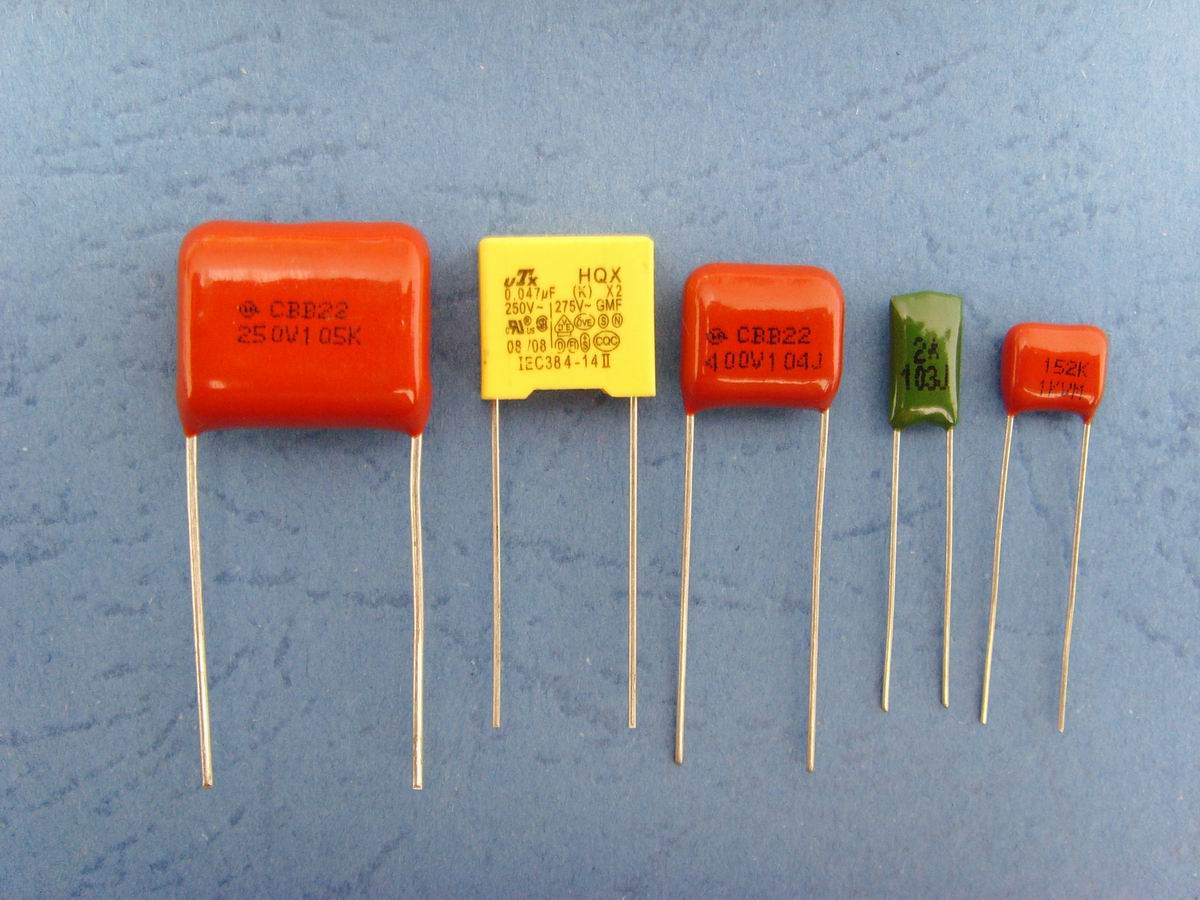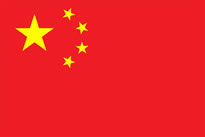A capacitor is a device that stores electrical energy in an electric field by virtue of accumulating electric charges on two close surfaces insulated from each other. It is a passive electronic component with two terminals.
The effect of a capacitor is known as capacitance. While some capacitance exists between any two electrical conductors in proximity in a circuit, a capacitor is a component designed to add capacitance to a circuit. The capacitor was originally known as the condenser,a term still encountered in a few compound names, such as the condenser microphone.
The physical form and construction of practical capacitors vary widely and many types of capacitor are in common use. Most capacitors contain at least two electrical conductors often in the form of metallic plates or surfaces separated by a dielectric medium. A conductor may be a foil, thin film, sintered bead of metal, or an electrolyte. The nonconducting dielectric acts to increase the capacitor's charge capacity. Materials commonly used as dielectrics include glass, ceramic, plastic film, paper, mica, air, and oxide layers. Capacitors are widely used as parts of electrical circuits in many common electrical devices. Unlike a resistor, an ideal capacitor does not dissipate energy, although real-life capacitors do dissipate a small amount (see Non-ideal behavior). When an electric potential difference (a voltage) is applied across the terminals of a capacitor, for example when a capacitor is connected across a battery, an electric field develops across the dielectric, causing a net positive charge to collect on one plate and net negative charge to collect on the other plate. No current actually flows through the dielectric. However, there is a flow of charge through the source circuit. If the condition is maintained sufficiently long, the current through the source circuit ceases. If a time-varying voltage is applied across the leads of the capacitor, the source experiences an ongoing current due to the charging and discharging cycles of the capacitor.
The earliest forms of capacitors were created in the 1740s, when European experimenters discovered that electric charge could be stored in water-filled glass jars that came to be known as Leyden jars. Today, capacitors are widely used in electronic circuits for blocking direct current while allowing alternating current to pass. In analog filter networks, they smooth the output of power supplies. In resonant circuits they tune radios to particular frequencies. In electric power transmission systems, they stabilize voltage and power flow.The property of energy storage in capacitors was exploited as dynamic memory in early digital computers,and still is in modern DRAM.

History
In October 1745, Ewald Georg von Kleist of Pomerania, Germany, found that charge could be stored by connecting a high-voltage electrostatic generator by a wire to a volume of water in a hand-held glass jar.Von Kleist's hand and the water acted as conductors and the jar as a dielectric (although details of the mechanism were incorrectly identified at the time). Von Kleist found that touching the wire resulted in a powerful spark, much more painful than that obtained from an electrostatic machine. The following year, the Dutch physicist Pieter van Musschenbroek invented a similar capacitor, which was named the Leyden jar, after the University of Leiden where he worked.He also was impressed by the power of the shock he received, writing, "I would not take a second shock for the kingdom of France."
Daniel Gralath was the first to combine several jars in parallel to increase the charge storage capacity.Benjamin Franklin investigated the Leyden jar and came to the conclusion that the charge was stored on the glass, not in the water as others had assumed. He also adopted the term "battery",(denoting the increase of power with a row of similar units as in a battery of cannon), subsequently applied to clusters of electrochemical cells.Leyden jars were later made by coating the inside and outside of jars with metal foil, leaving a space at the mouth to prevent arcing between the foils.[citation needed] The earliest unit of capacitance was the jar, equivalent to about 1.11 nanofarads.
Leyden jars or more powerful devices employing flat glass plates alternating with foil conductors were used exclusively up until about 1900, when the invention of wireless (radio) created a demand for standard capacitors, and the steady move to higher frequencies required capacitors with lower inductance. More compact construction methods began to be used, such as a flexible dielectric sheet (like oiled paper) sandwiched between sheets of metal foil, rolled or folded into a small package.
Early capacitors were known as condensers, a term that is still occasionally used today, particularly in high power applications, such as automotive systems. The term was first used for this purpose by Alessandro Volta in 1782, with reference to the device's ability to store a higher density of electric charge than was possible with an isolated conductor.The term became deprecated because of the ambiguous meaning of steam condenser, with capacitor becoming the recommended term in the UK from 1926,while the change occurred considerably later in the United States. In other countries, the term condensator has been in common use.[citation needed]
Since the beginning of the study of electricity, non-conductive materials like glass, porcelain, paper and mica have been used as insulators. Decades later, these materials were also well-suited for use as the dielectric for the first capacitors. Paper capacitors, made by sandwiching a strip of impregnated paper between strips of metal and rolling the result into a cylinder, were commonly used in the late 19th century; their manufacture started in 1876,and they were used from the early 20th century as decoupling capacitors in telephony.
Porcelain was used in the first ceramic capacitors. In the early years of Marconi's wireless transmitting apparatus, porcelain capacitors were used for high voltage and high frequency application in the transmitters. On the receiver side, smaller mica capacitors were used for resonant circuits. Mica capacitors were invented in 1909 by William Dubilier. Prior to World War II, mica was the most common dielectric for capacitors in the United States.
Charles Pollak (born Karol Pollak), the inventor of the first electrolytic capacitors, found out that the oxide layer on an aluminum anode remained stable in a neutral or alkaline electrolyte, even when the power was switched off. In 1896 he was granted U.S. Patent No. 672,913 for an "Electric liquid capacitor with aluminum electrodes". Solid electrolyte tantalum capacitors were invented by Bell Laboratories in the early 1950s as a miniaturized and more reliable low-voltage support capacitor to complement their newly invented transistor.
With the development of plastic materials by organic chemists during the Second World War, the capacitor industry began to replace paper with thinner polymer films. One very early development in film capacitors was described in British Patent 587,953 in 1944.
Electric double-layer capacitors (now supercapacitors) were invented in 1957 when H. Becker developed a "Low voltage electrolytic capacitor with porous carbon electrodes".He believed that the energy was stored as a charge in the carbon pores used in his capacitor as in the pores of the etched foils of electrolytic capacitors. Because the double layer mechanism was not known by him at the time, he wrote in the patent: "It is not known exactly what is taking place in the component if it is used for energy storage, but it leads to an extremely high capacity."
The metal–oxide–semiconductor capacitor (MOS capacitor) originates from the metal–oxide–semiconductor field-effect transistor (MOSFET) structure, where the MOS capacitor is flanked by two doped regions.The MOSFET structure was invented by Mohamed M. Atalla and Dawon Kahng at Bell Labs in 1959.The MOS capacitor was later widely adopted as a storage capacitor in memory chips, and as the basic building block of the charge-coupled device (CCD) in image sensor technology.In dynamic random-access memory (DRAM), each memory cell typically consists of a MOSFET and MOS capacitor.
 繁體(台灣)
繁體(台灣) 简体中文
简体中文 USA(English)
USA(English) Vietnam
Vietnam